Creating a Dresden Plate Quilt is a timeless way to showcase your quilting skills.
This classic pattern has been cherished by quilters for generations due to its intricate yet achievable design. Whether you’re new to quilting or have been crafting for years, this step-by-step guide will help you master the Dresden Plate quilt pattern.
In this tutorial, we’ll break down the process from cutting fabric to sewing your blocks together. We’ll also incorporate essential quilt patterns keywords to guide you through this creative journey.
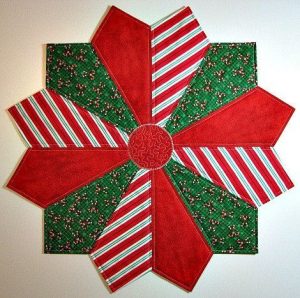
Materials and Tools You’ll Need
Before starting your Dresden Plate quilt, gather all the necessary materials. You’ll need fabric, thread, a rotary cutter, a ruler, a cutting mat, and a Dresden Plate template. For fabric, select a variety of prints that complement each other. You’ll need about 10-12 fat quarters for the plates, plus background fabric for your quilt blocks.
Investing in high-quality quilting tools will make your work more precise. A rotary cutter ensures sharp, clean edges, while a quilting ruler helps you measure and cut with accuracy. Your Dresden Plate template can either be store-bought or handmade. Templates usually come in 10 or 12-inch sizes, but you can adjust the scale based on your desired outcome.
Lastly, a sewing machine with a quarter-inch foot is essential for precision piecing. Don’t forget to keep your iron nearby, as pressing your seams is crucial to achieving a smooth finish. Now that you’re equipped with the right tools, let’s move on to cutting the fabric.
Cutting the Fabric Pieces
To create a Dresden Plate quilt pattern, you’ll need to cut several fabric pieces accurately. Begin by cutting the background fabric into 12.5-inch squares. These squares will serve as the base for your Dresden Plates. Depending on the size of your quilt, cut enough squares to create your desired layout.
Next, cut your fabric for the blades of the Dresden Plates. Using your template, trace and cut 20 blades for each plate. The standard size for each blade is about 4 inches wide and 8 inches long, but feel free to adjust the dimensions to suit your project. Mixing different fabric prints adds visual interest to your quilt.
Once your fabric pieces are cut, it’s time to shape the blades. Fold the top edge of each blade in half, right sides together, and sew across the top. Turn it right side out and press the seam. This will create a pointed edge, giving your Dresden Plate its distinctive look.
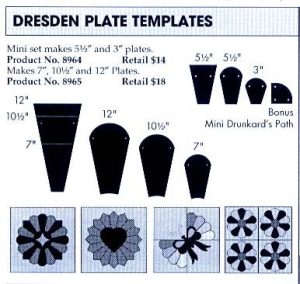
Assembling the Dresden Plate Block
Now that your blades are ready, it’s time to assemble your Dresden Plate quilt block. Lay out your 20 blades in a circle, alternating fabrics to create a balanced design. Pin the blades together, and sew them with a quarter-inch seam allowance. Work slowly to ensure that the seams align correctly for a polished finish.
Once all the blades are sewn together, press the seams flat. This step is crucial for getting your Dresden Plate to lie smoothly on your background fabric. Next, center the plate on one of your 12.5-inch background squares and pin it in place.
To attach the Dresden Plate to the background fabric, you can use either hand or machine appliqué techniques. If you prefer hand appliqué, use a whip stitch to sew around the edges. For machine appliqué, select a small zigzag stitch or blanket stitch to secure the plate. Both methods give a neat and durable finish to your quilt pattern.
Creating the Center Circle
The center circle of your Dresden Plate quilt block adds the final touch to this elegant design. Cut a circle of fabric that is about 3-4 inches in diameter, depending on the size of your Dresden Plate. Use a small plate or a circular template to trace and cut the fabric.
To create a smooth, turned-edge circle, use the needle-turn appliqué method. First, baste around the edge of the circle, leaving a long tail of thread. Gently pull the thread to gather the fabric, shaping it into a perfect circle. Press the edges with an iron to set the shape.
Position the circle in the center of your Dresden Plate and pin it in place. Like the plate, you can either hand stitch or machine appliqué the circle to the block. Once attached, press your block carefully to ensure everything is flat and smooth.
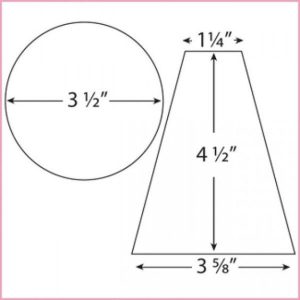
Completing the Quilt Top
After finishing your Dresden Plate blocks, it’s time to assemble the quilt top. Lay out your blocks in your desired arrangement, whether it’s a traditional grid layout or a more creative design. Make sure to balance the colors and patterns for a harmonious look.
Sew the blocks together, using a quarter-inch seam allowance. Press the seams open or to one side, depending on your preference. Once all the blocks are sewn together, add borders if desired. Borders can frame your quilt and add extra dimension to the overall design.
Finally, press your quilt top thoroughly. This will ensure that it lies flat and is ready for the next step: quilting. The pressing process is often overlooked, but it’s essential for achieving a professional-looking finish.
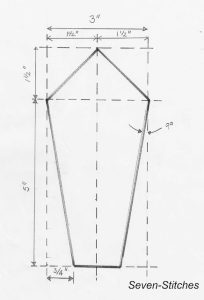

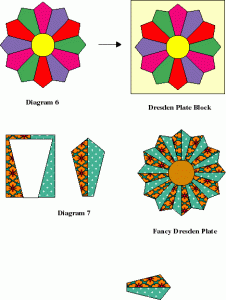
Quilting and Binding
With your quilt top complete, it’s time to add the quilting stitches. Quilting holds the layers of your quilt together and enhances the design. You can quilt by hand or use a sewing machine, depending on your skill level and the look you want to achieve.
For a Dresden Plate quilt, echo quilting around the plates is a popular choice. This technique involves stitching around the edges of the Dresden Plate, following its shape. You can also add more intricate designs like feathers or stippling in the background fabric to highlight the plates even more.
Once your quilt is quilted, trim the edges to prepare for binding. The binding is the final step, enclosing the raw edges of your quilt. Cut binding strips from coordinating fabric, about 2.5 inches wide, and sew them around the edge of the quilt. Fold the binding over to the back and hand stitch it down for a clean finish.
Finishing Touches
Now that your Dresden Plate quilt is quilted and bound, take a moment to admire your work. A Dresden Plate quilt is a stunning example of traditional quilting combined with modern techniques. The careful selection of fabrics, precise cutting, and detailed stitching all contribute to the beauty of this quilt pattern.
If you’re making this quilt as a gift, consider adding a quilt label with your name, the date, and any special messages. This personal touch will make your quilt even more meaningful. Additionally, take care to wash and store your quilt properly to preserve its beauty for years to come.
Join our VIP list and receive exclusive free patterns. You’ll have daily access to the best designs, delivered straight to your device. Don’t miss this chance to get inspired and improve your projects with new and amazing patterns!
Creating a Dresden Plate quilt pattern is a rewarding experience that showcases your creativity and skills. Whether you keep it for yourself or gift it to a loved one, this quilt will be a treasured piece in any collection. Enjoy the process, and happy quilting!





